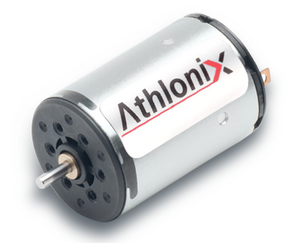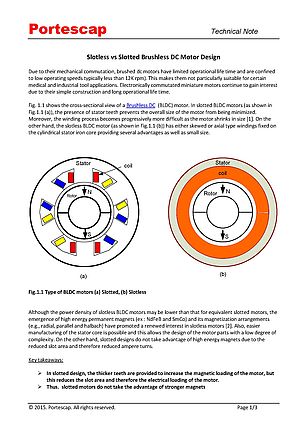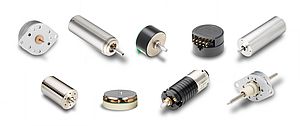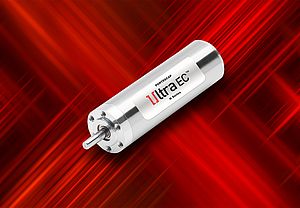Since the term bionics was coined in the late ‘50s, the technology has transcended science fiction to grow into a multi-billion-dollar industry. Combining biology and electronics, a recent report projects that the bionic-prosthetics market is set to grow from $1.5bn to $2.8bn by 2030, meaning an annual growth rate of over 9% (https://www.coherentmarketinsights.com/market-insight/bionic-prosthetics-market-5815). Closely allied is a corresponding growth in end effector technology development, required for the final actuation of these robotic solutions, including gripping and holding.
Growth is being driven by the need to enhance the lives of those with disabilities, supported by capabilities of new technology that are enabling a more effective use of robotics. Bionic solutions include prosthetic limbs, providing replacements for hands, wrists, elbows, or knees. Electrically powered prosthetic limbs are driven by small, DC motors, and can be controlled by either a myoelectrical signal that uses impulses from the residual limb, or a microprocessor that collects position and acceleration data from sensors to determine proper motion. Alternatively, electrically powered exoskeletons are wearable devices that provide external support to the body, and typically involve the limbs.
Miniature motors in bionics applications
For the patient, the prosthetic limb or exoskeleton has to feel natural, so they must be low-weight. While bionic development involves light yet strong materials, such as carbon fibre and graphene, the motion systems that drive them must achieve high power density.
For smaller body parts, including fingers and elbow joints, coreless brushed DC motors are used because of their small size and weight. Here, the coreless feature optimises low mass thanks to a design that removes the traditional iron core. For larger joints, such as hips, knees, or shoulders, brushless DC (BLDC) motors are used to support the increased torque requirement. Optimising power density is crucial to maintain low weight, so motor designs like Portescap’s Ultra EC™ brushless DC motor, which features a coil design that increases the torque-to-mass ratio, is highly beneficial.
For the wearer of prosthetics or exoskeletons to experience intuitive operation, the devices must also provide actuation and control akin to human reactions, so motion has to be dynamic yet smooth. Low inertia, achieved through designs such as the coreless rotor, enables rapid changes in speed, and this must be combined with low cogging, giving smooth torque delivery. When brushless technology is required for higher torque, the Ultra EC motor features a slotless design, which also minimises cogging and enables a consistent magnetic field, reducing variations in torque.
Significant for wearer comfort, bionic devices are battery-dependent. To extend battery life, and minimise the size and weight of the battery, high motor efficiency is essential. For smaller joints, the coreless brushed DC design minimises energy dissipation by reducing the effect of eddy current losses. For larger applications, brushless motors are inherently efficient by removing mechanical commutation, but Portescap’s proprietary U coil design extends efficiency for its Ultra EC motor.
Surgical robots and motion requirements
Improving the health outcome of millions of patients worldwide, the requirement for surgical robots is even more widespread than the burgeoning bionics sector. Since the first robot-assisted surgery in 1985, today’s $4.4bn surgical robot market is projected to grow at 18% up to 2030 as capabilities are enhanced by trends including AI.
A key advantage of robotic surgery is extreme precision. This enables intricate procedures to be carried out with minimally invasive surgery, helping the patient to recover much faster. Like bionics, the motion systems that power surgical robots are fundamental to reach high-level precision.
Portescap has extensive experience in motion control to support complex applications and is now expanding its capabilities to solve problems with frameless solutions. Frameless motors consist of un-housed rotors and stators and, some of the benefits addressed with this technology include:
- Optimisation of envelope (size, weight reduction) for the specific application
- Excellent torque density and ease of integration with strain wave gearing
- Minimising backlash for precise positioning and holding
- Minimising cogging for smooth motion
Although motion systems for bionics need to be durable for everyday use, those used in robotic surgery take this up a level because of the need, in most cases, to withstand sterilisation. Portescap’s Surgical Motion Solutions features many autoclavable micro motion solutions, with its brushless slotted motors able to survive up to 1,000 autoclave cycles.
End effector control
Actuation and control of the robotic end effectors for surgical robots, such as the high precision blades or grinders, are also influenced by trends from wider industry. No matter where or how a robot is applied, its end effectors are essential to pick up or grip an object, hold a tool, or push/pull an object. Commonly, end effectors are based on grippers with either parallel jaws or three fingers, plus angular motion grippers.
Developments over the next decade will see the integration of machine vision with AI, enabling grippers to identify and manipulate objects with even greater accuracy, allowing them to perform multiple tasks simultaneously. To achieve these advances, electric gripper control, rather than pneumatic, is the norm, thanks to the higher degree of control and power density provided.
Demand on motion systems that accentuate these advantages will continue. This will include the increasing need for precise position and force control. Dynamic motors that can rapidly accelerate will help achieve this, with slotless BLDC motors providing the low inertia, low weight, and high torque characteristics necessary. Motors will also be equipped with advanced feedback devices, such as high-resolution encoders, to enable accurate and responsive grip adjustments.
Customised motion development
Each sector has an array of robotic application possibilities, and the requirements for every individual use case varies greatly. Subsequently, this places a wide span of demands on motion systems. To achieve the most effective motion specification, a growing trend will be the requirement for customisation. One motor design can’t serve all needs, so customisation will be increasingly required for virtually every type of robot.
This approach will be crucial to optimise robotic performance to specific tasks, and hence improve the patient or wearer outcome. Customisation can also streamline integration for the robot builder, and the time saving will not only enable a faster time to market, but it can also achieve a more economical cost of development.
The selection of an optimum motion control partner must consider its capability to optimise performance in compact envelopes and the capacity to support demanding development schedules.


























